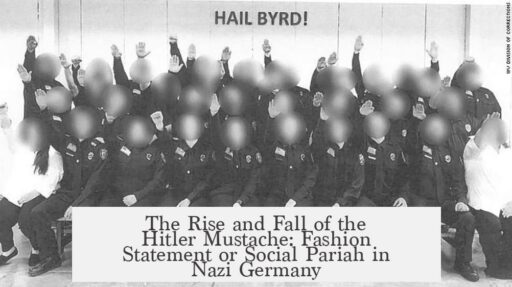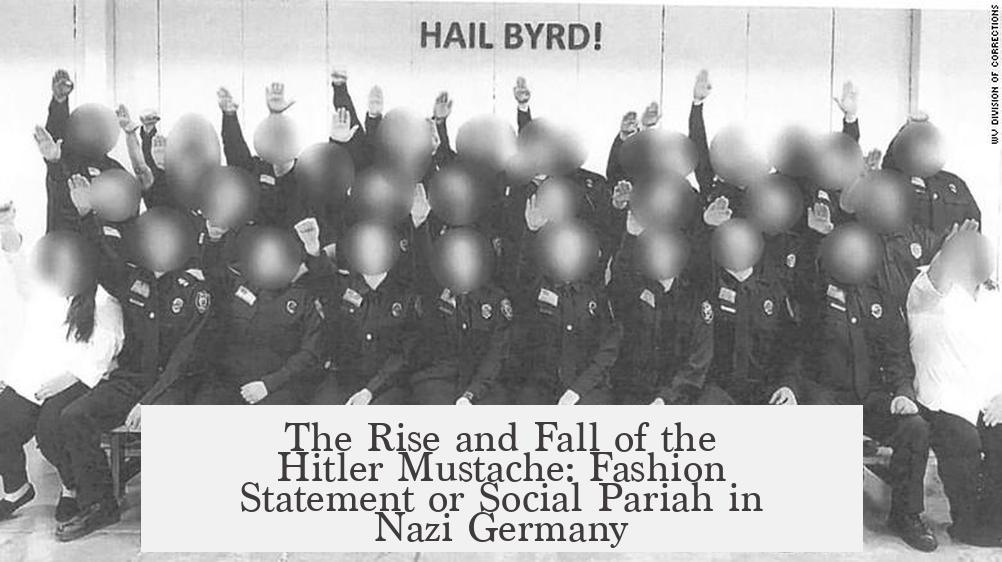Hitler mustaches were not popular in Nazi Germany, and impersonating the Führer’s looks was generally uncommon and sometimes frowned upon.
The distinctive “toothbrush mustache” adopted by Adolf Hitler has a specific origin. Early in World War I, Hitler sported a traditional, sweeping handlebar mustache. However, the introduction of gas warfare made it impossible to get a proper seal on gas masks with such facial hair. To solve this, Hitler trimmed his mustache down to the narrow “toothbrush” style he would become known for.
Before Hitler’s rise, this style was already in existence but not well-liked. Women reportedly disliked it as early as 1907, and it carried negative nicknames such as the “snot brake.” Comedian Charlie Chaplin had famously worn it before the war, which further shaped the style’s image. It was often associated with ridicule and absurdity rather than fashion or prestige.
During the Third Reich, the toothbrush mustache remained unfashionable in Germany. Most Germans and even the Nazi elite avoided emulating Hitler’s facial hair style. For instance, prominent Nazis like Julius Streicher were rare exceptions in keeping a similar mustache.
Hitler himself acknowledged the style’s lack of popularity. According to Putzi Hanfstaengl, Hitler was advised to grow out the mustache because it was considered a “fashion faux pas.” Hitler responded that while it was not in style now, he would make it fashionable by wearing it himself. Some speculate Hitler chose this mustache to balance the appearance of his nose, though direct confirmation is absent.
Public perception of Hitler’s mustache was often tied to its comedic or mocking associations, notably through comparisons to Charlie Chaplin, whose character “The Little Tramp” inspired both laughter and disdain. This resemblance caused some to underestimate Hitler during his early political career. International press occasionally made fun of the “little scrub” of a mustache in the early 1930s. Rather than projecting fear or respect, the mustache contributed to a perception of Hitler as a figure more comical than threatening.
As a result, impersonation or mimicry of Hitler’s look was neither widely embraced nor encouraged in Nazi Germany. The style did not become a trend or symbol of allegiance among the general public or Nazi Party members. Instead, it remained an oddity closely tied to Hitler himself and was often the subject of ridicule.
| Aspect | Details |
|---|---|
| Origin | WWI gas mask necessity led Hitler to adopt the toothbrush mustache |
| Pre-war Popularity | Unpopular style; nicknamed “snot brake”; disliked especially by women |
| Third Reich Popularity | Unfashionable; few Nazis (e.g., Streicher) copied it |
| Impersonation | Rare and sometimes frowned upon; no mass trend to imitate Hitler’s look |
| Public Perception | Associated with Chaplin’s comedic mustache; contributed to ridicule and underestimation |
In short, Hitler’s toothbrush mustache did not spark a fashion movement. Despite the Führer’s prominence, the style sustained an unpopular status. Impersonation was not widespread; rather, it was limited and sometimes viewed negatively.
- The toothbrush mustache’s origin was practical, linked to WWI gas mask use.
- Before Hitler, the style was unpopular and mocked.
- During the Nazi era, few adopted the style, and it remained unfashionable.
- Hitler’s mustache evoked associations with Charlie Chaplin’s comedic persona.
- Impersonating Hitler’s look was rare and often discouraged or mocked.
Were “Hitler Mustaches” Popular in Nazi Germany? Did People Try to Impersonate the Führer’s Looks or Was This Frowned Upon?
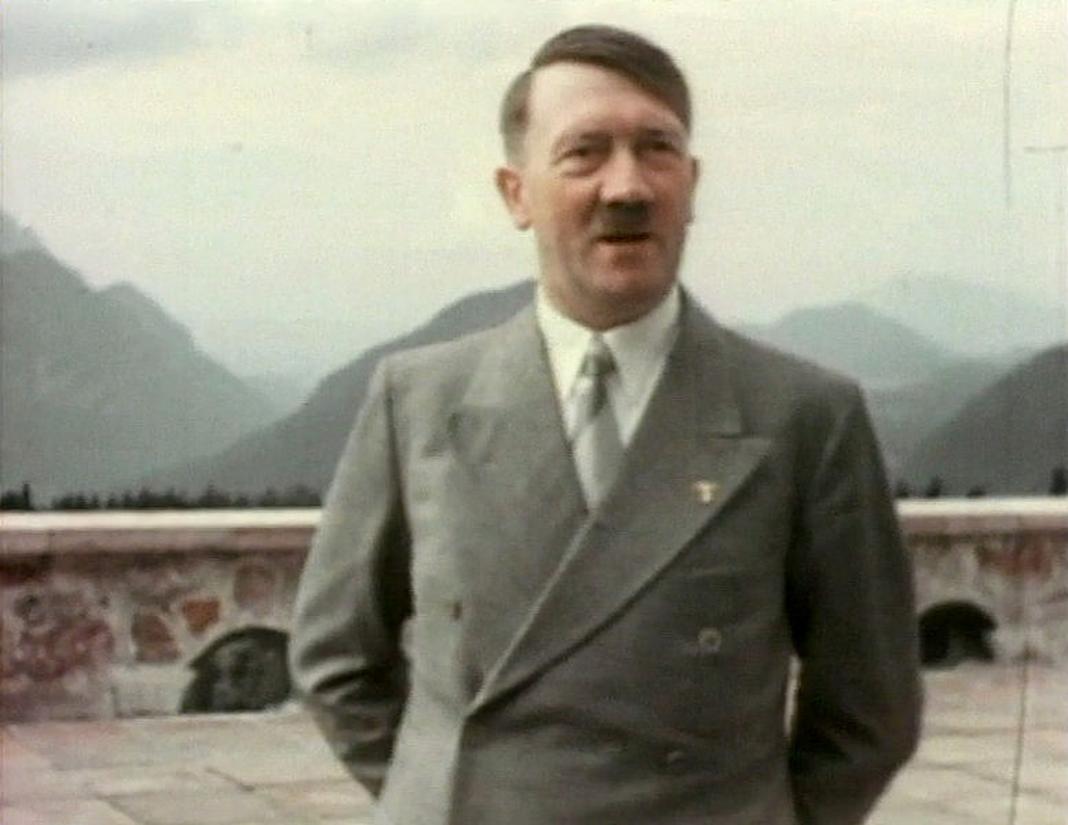
The short answer is: No, “Hitler mustaches” were NOT popular in Nazi Germany, and most people did not try to copy the Führer’s infamous facial hair style. In fact, it was often met with disapproval, mockery, and, surprisingly, even disdain. Let’s unravel this peculiar mustache mystery together.
A Brief History: How Did the “Toothbrush Mustache” Even Come About?
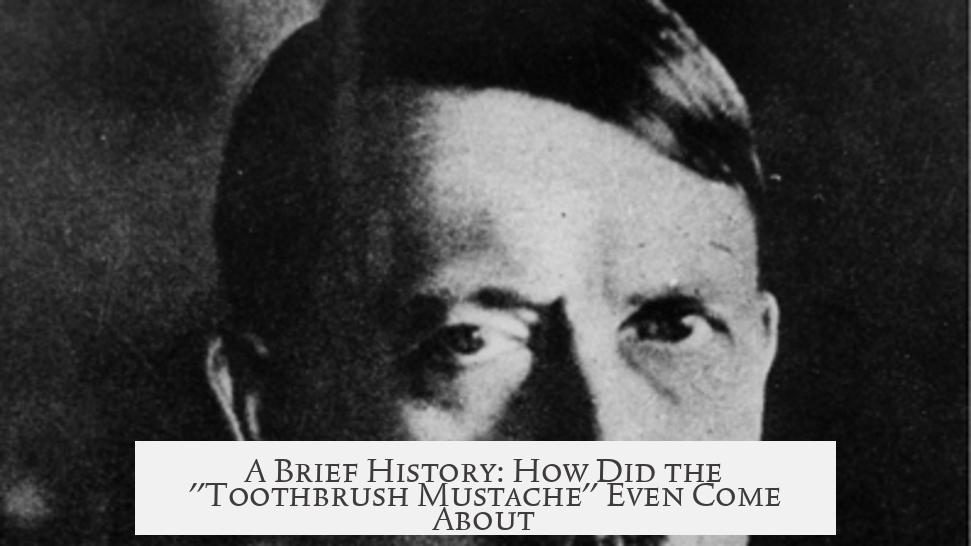
Hitler’s iconic toothbrush mustache didn’t sprout from a fashion trend, but rather necessity. Early in WWI, Hitler sported a sweeping handlebar mustache, very much the style of that era. But then came a brutal innovation: gas warfare. This scary new threat needed a gas mask that sealed tightly around the face.
The wide handlebar was a problem here. So, the mustache got a trim—down to a stubby square patch above his lip. According to common accounts, this change was strategic, allowing a proper mask seal.
However, the brushed-on style wasn’t new and certainly wasn’t popular. This look, nicknamed the “snot brake,” had existed in Germany before the war. Women famously detested it as early as 1907, and Charlie Chaplin had already been rocking a near-identical style for his “Little Tramp” character well before Hitler wore it.
So, Hitler’s mustache was less a trend and more a quirky, if unfortunate, legacy of gas warfare adaptations.
The Mustache in the Third Reich: Not a Trendsetter’s Delight
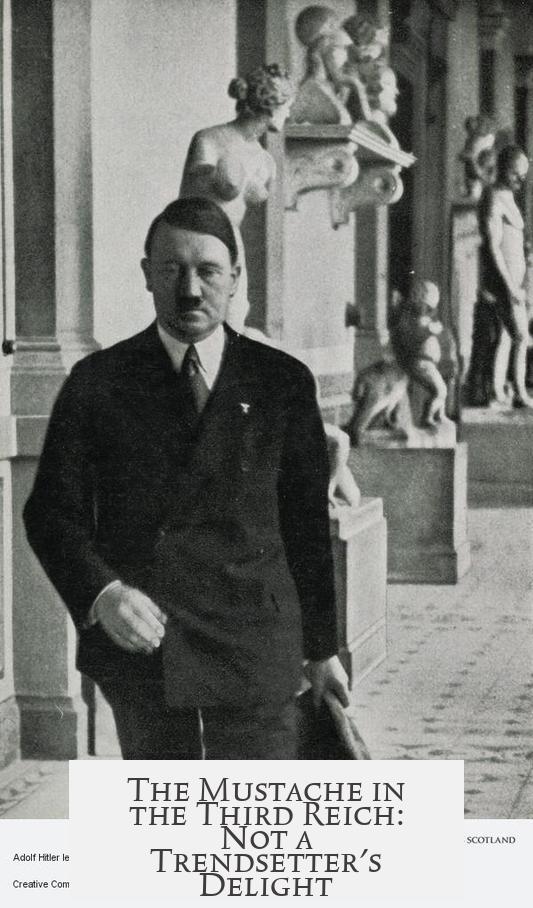
You might imagine that once Hitler came to power, his style choices would flood the streets. Nope. Not so much. By the late 1920s, the toothbrush mustache was out of fashion in Germany, largely because it was seen as unattractive or silly.
Here’s a fun tidbit. Putzi Hanfstaengl, a close associate, advised Hitler to ditch the mustache, calling it a “fashion faux pas.” Hitler’s alleged response was a bold claim: “If it’s not the fashion now, it will be later because I wear it.” Spoiler alert: it didn’t become fashionable.
Another theory suggests Hitler chose the style to balance the somewhat prominent size of his nose—a kind of facial symmetry hack. While this sounds like a quirky vanity move, there’s no direct quote from Hitler confirming this. Just rumors and speculation from people around him.
Did Others Try to Copy the Führer?
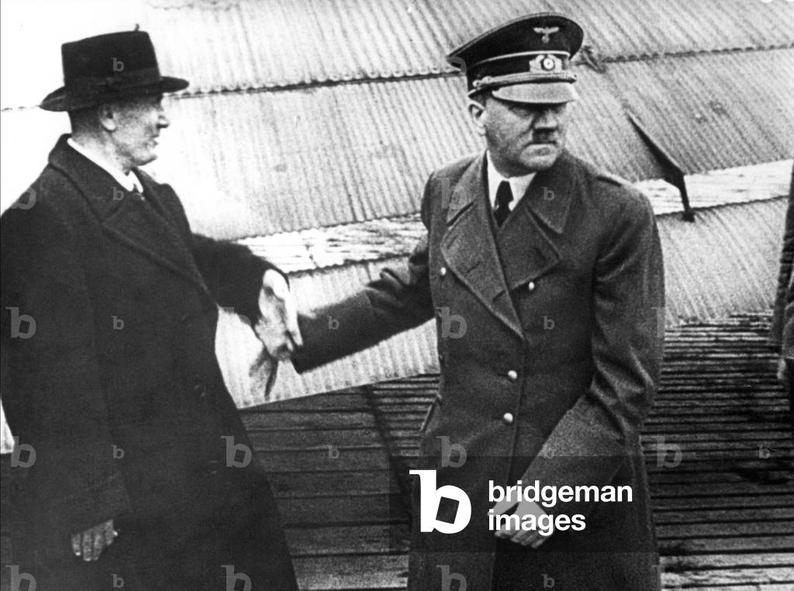
Despite Hitler being the supreme leader and arguably the most famous man in Germany at that time, few prominent Nazis adopted the same mustache style. Julius Streicher is a rare exception, but he was outlier.
So why the lack of imitation? The mustache was so unfashionable and associated with ridicule, most people found it unappealing to copy.
Mustache and Mockery: More of a Joke Than a Symbol
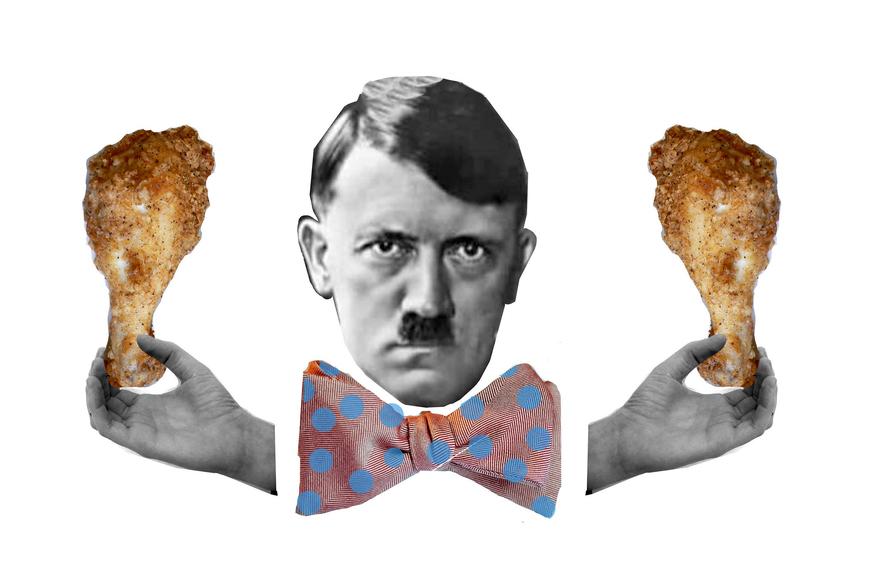
The mustache didn’t just fail to catch on; it also made Hitler the subject of mockery. Many Germans, particularly after the failed Beer Hall Putsch in 1923, saw Hitler as a joke partly because of the resemblance to Charlie Chaplin.
“A figure to be mocked more than feared, a comic villain whose pretensions would collapse like the Little Tramp collapsing on his cane,” wrote an observer about the early perception of Hitler.
The foreign press took this ridicule further. For example, the 1931 Boston Globe referred to Hitler’s mustache as a “little scrub” and compared it directly to Chaplin’s. This reinforcement of humor over horror may have contributed to the dangerous underestimation of Hitler’s ambitions.
So, ironically, the legendary mustache wasn’t a symbol of power or trend but part of a flawed lens through which many initially viewed Hitler: as a clown rather than a menace.
Final Takeaway: The Mustache Remained a Lonely Fashion Statement
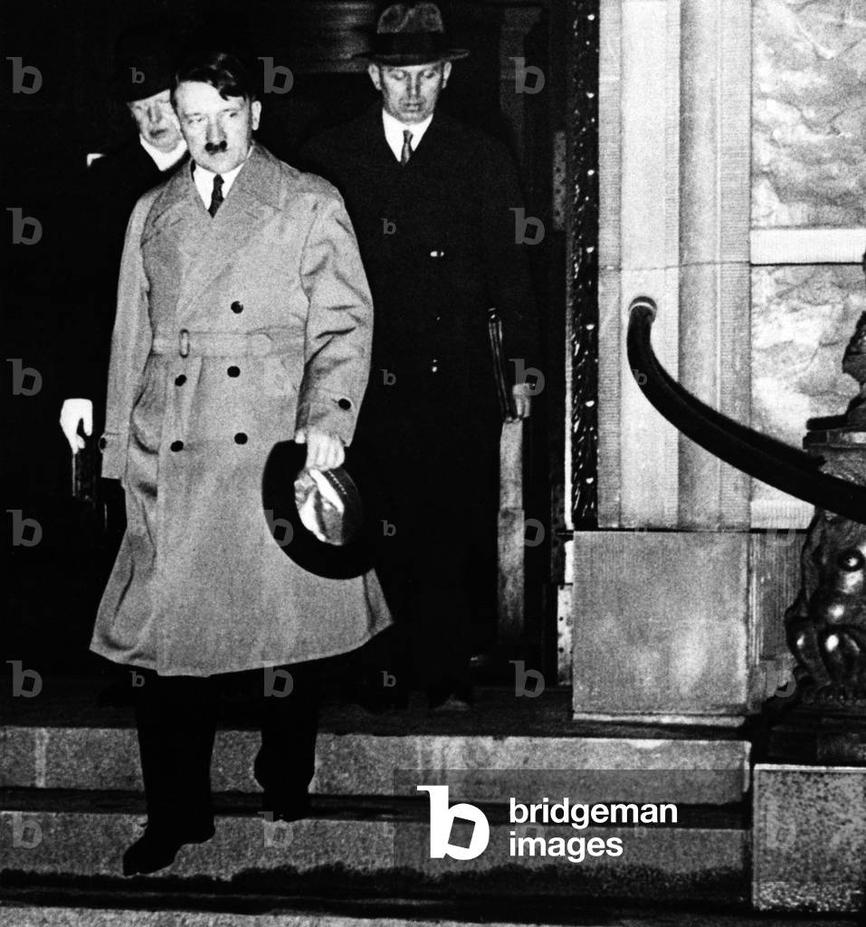
While a few people might have wore similar mustaches coincidentally or even imitated Hitler’s look, there was no widespread movement or acceptance of the “Hitler mustache.” It was unfashionable before, during, and after his rise to power.
Rather than sparking a facial hair revolution, the style continued to earn ridicule, nicknames like “snot brake,” and little else. Its association with Hitler sealed its fate as a look most Germans and Nazis chose not to embrace.
Why Does This Matter Today?
Curious about whether we should ever accidentally sport a similar mustache? Given the heavy historical baggage, the answer is clear: Avoid it. It’s not just about fashion but about what the symbol has come to represent.
So, if you want to channel some of that early 20th-century spirit, there are plenty of other mustache styles (the handlebar, pencil, walrus) that won’t get you mistaken for a political dictator or a silent film comedian.
Summary Table: Hitler Mustache Popularity at a Glance
| Aspect | Fact |
|---|---|
| Origin | Adopted in WWI for gas mask sealing; before that, Hitler had a handlebar mustache. |
| Pre-War Popularity | Already unfashionable; disliked especially by women; known as “snot brake.” |
| Popularity During Third Reich | Remained unpopular; few Nazis copied it; Hitler insisted it would become trendy, but it didn’t. |
| Public Perception | Mocked for resemblance to Charlie Chaplin; seen as comic rather than menacing. |
| Emulation | Limited. Noteworthy emulators very rare, like Julius Streicher. |
In conclusion, if you ever wondered whether the infamous toothbrush mustache was a popular Nazi fashion or a symbol to be widely copied, the answer is a big no. It was widely unfashionable, often mocked, and not embraced even by the official political elite of the era.
What does this teach us? Sometimes, even dictators can’t make bad fashion catch on. And maybe that’s one trend we’re glad didn’t survive history’s harsh spotlight.
